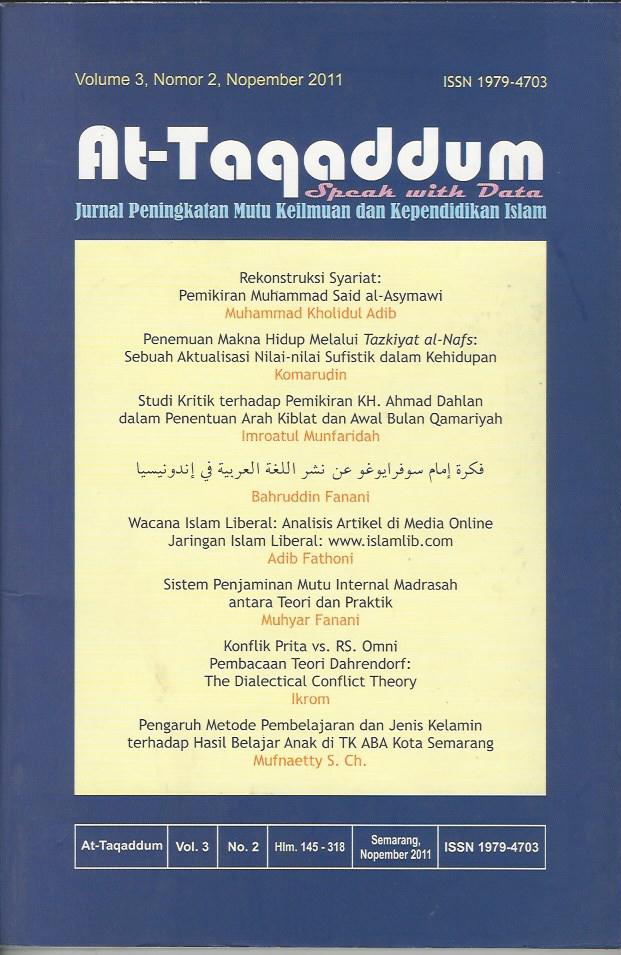SISTEM PENJAMINAN MUTU INTERNAL MADRASAH ANTARA TEORI DAN PRAKTIK
DOI:
https://doi.org/10.21580/at.v3i2.499Keywords:
Quality Assurance, PDCA, kaizen, continuous improvement.Abstract
This paper discusses the application of internal quality assurance system in the madrasah (Islamic School). This paper concludes that the quality assurance system is a systematic effort to improve the quality of education in a sustainable cycle that is manifested in the form of quality assurance activities to prevent unnecessary mistakes. Quality assurance system has some of the principles underlying the system works. Those Principles are a). Identify customers and their needs. b). Creating quality measurements. c). Plan process to achieve goals. d). The existence of a continuous of progress. In order to create continuous improvement, the head of madrasah (Islamic School) need to apply Deming's wheel consisting of plan, do, check, and act. For those madrasah which has many limitations, the PDCA is run by following the advice of Joseph Juran, namely: First, run a Kaizen, ie step by step improvement. Second, choose a low-cost measures. A good plan should be drawn off from the vision and mission of the madrasah which then are translated into a quality policy and objectives (targets) while considering the quality of customer needs. From the quality objectives specified performance indicators so as to facilitate evaluation. When the indicator has not been as planned, it means that there must be a record of improvement. PDCA cycle never ends, because the continuous improvement should be always sought.Downloads
Downloads
Published
How to Cite
Issue
Section
License
The copyright of the received article shall be assigned to the journal as the publisher of the journal. The intended copyright includes the right to publish the article in various forms (including reprints). The journal maintains the publishing rights to the published articles. Therefore, the author must submit a statement of the Copyright Transfer Agreement.*)

This work is licensed under a Creative Commons Attribution-ShareAlike 4.0 International License.
In line with the license, authors and third parties (readers, researchers, and others) are allowed to share and adapt the material. In addition, the material must be given appropriate credit, provided with a link to the license, and indicated if changes were made. If authors remix, transform or build upon the material, authors must distribute their contributions under the same license as the original.
________
*) Authors whose articles are accepted for publication will receive confirmation via email and send a Copyright Transfer Agreement.











